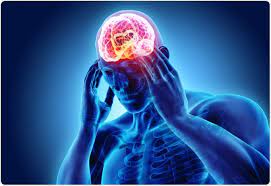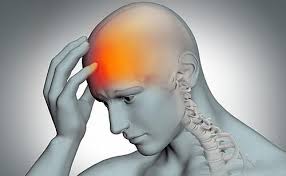Hello!
A traumatic brain injury (TBI) is one of the most common reasons for disability and death among adults in the U.S. They also occur in children, and it’s important to understand the facts about these injuries so that you’ll be able to identify the red flags if they occur in your loved one.
1. The Causes of a TBI Can Vary
 There are a lot of ways a TBI can happen. They can occur because of a bump or jolt, a blow to the head, or a penetrating injury that can disrupt the normal function of the brain. Not every hit to the head will lead to a TBI, but if one does occur, it can range in severity.
There are a lot of ways a TBI can happen. They can occur because of a bump or jolt, a blow to the head, or a penetrating injury that can disrupt the normal function of the brain. Not every hit to the head will lead to a TBI, but if one does occur, it can range in severity.
Just about anyone can experience a TBI.
They can come from car accidents, playing sports, being at work, or even slipping and falling.
According to extensive research compiled by the Centers for Disease Control and Prevention (CDC), falls lead to around half of all hospitalizations related to traumatic brain injuries. Assaults and motor vehicle crashes are other common ways, as are firearm-related suicides.
For people in the military, explosive blasts and similar combat injuries can lead to traumatic brain injuries.
 TBIs are often characterized in one of two broad categories—open or closed. In an open TBI, the skull is broken, and it’s not in a closed TBI.
TBIs are often characterized in one of two broad categories—open or closed. In an open TBI, the skull is broken, and it’s not in a closed TBI.
Other classifications include a concussion, which is a direct impact trauma that is often mild but can be deadly, and a contusion. A contusion comes from a direct blow causing bleeding in the brain.
A diffuse axonal injury is when there are tears in the brain structure that occur because of sheering by the victim’s skull.
2. Signs and Symptoms May Not Emerge for Weeks
One of the tricky parts about a TBI is that it can take weeks for certain signs and symptoms to appear. In some cases, all the symptoms appear right away, within around 24 hours.
Other times it can be days or weeks.
 Someone may realize they’re experiencing a problem or something feels off but not realize it’s related to their injury. It’s also possible to have no symptoms immediately following a TBI, but then the condition gets worse later.
Someone may realize they’re experiencing a problem or something feels off but not realize it’s related to their injury. It’s also possible to have no symptoms immediately following a TBI, but then the condition gets worse later.
Symptoms of a mild TBI can include dizziness, headache, and confusion. Memory impairment, ringing in the ears, blurry vision, and changes in behavior can also be signs of a mild TBI.
Moderate to severe brain injuries can cause vomiting or nausea, slurred speech, and weakness in the arms or legs. Symptoms can also include problems with thinking or learning, and these injuries can be fatal.
3. Some People Are More at Risk Than Others
The people most at risk of a traumatic brain injury include children, particularly newborns up to four years old, and young adults between the ages of 15 and 24. Adults who are 60 or older are considered at high-risk, and males in any age group are too.
 There are steps to take to reduce their risk of experiencing a TBI. Always using a seatbelt is one way. You should also make sure the airbags in your vehicle are activated. You shouldn’t use drugs or alcohol before driving, including impairing prescription medications.
There are steps to take to reduce their risk of experiencing a TBI. Always using a seatbelt is one way. You should also make sure the airbags in your vehicle are activated. You shouldn’t use drugs or alcohol before driving, including impairing prescription medications.
If you’re doing any activity that calls for it, make sure you wear a helmet.
You can also reduce your risk by paying attention to what’s going on around you. Don’t, for example, cross the street while you’re distracted by your phone.
4. Childhood TBIs Can Affect Brain Development
If a child sustains a TBI, it can affect them differently than it does adults. If a child’s developing brain is injured, it can limit their ability to participate in school and activities. It can disrupt development and lead to changes in thinking, behavior, and health. These effects can be short or long-term.
Also read: The Top 10 In-Demand Tech Skills
5. It’s Common To Miss TBIs in Older Adults
 For older people who are at a greater risk of falling or being in other accidents, the potential for a brain injury is higher than we might initially realize. In fact, compared to all other age groups, older adults are more likely to be hospitalized and subsequently die from a TBI.
For older people who are at a greater risk of falling or being in other accidents, the potential for a brain injury is higher than we might initially realize. In fact, compared to all other age groups, older adults are more likely to be hospitalized and subsequently die from a TBI.
There’s often a problem with missing the symptoms or misdiagnosing them in the older age group because symptoms can overlap with other medical conditions common in this demographic, like dementia.
Healthcare providers have to assess certain symptoms in older adults very carefully and check for signs of TBI if they’ve fallen or been in a car accident. This is even more important among older people who take blood thinners because they can increase the risk of bleeding after a TBI.
6. Treatment Depends on Severity
If someone sustains a traumatic brain injury, their treatment plan will vary depending on the particular type and how severe it is. If someone has a very mild head injury, they can usually go home and rest, returning to normal activities in a few days. If the injury is more severe, it can take more time and effort to recover, but it’s still possible.
For more severe injuries, treatment providers will focus on activation of the brain’s neuroplasticity which helps in regaining function.
 There are various therapies that can help activate neuroplasticity in the brain. Speech therapy is one example, as are physical and occupational therapy.
There are various therapies that can help activate neuroplasticity in the brain. Speech therapy is one example, as are physical and occupational therapy.
Cognitive training can also help. Cognitive training is to help improve attention, problem-solving, memory, and learning.
7. Diagnosis Can Be Challenging
Finally, some of the symptoms of TBI can be difficult to detect, and it can take a range of tests to make a final diagnosis.
The first step is usually a medical exam, which will include a neurological exam. Neurological exams evaluate motor function, eye movement, coordination, thinking, and reflexes.
A treatment team might order imaging tests like MRIs or CTs. These imaging tests can’t detect every TBI, but they can help rule out certain things or detect bleeding that might need emergency attention.
There’s not one particular tool or product that can diagnose a TBI alone. Instead, it is usually a process.
Thank you!
Join us on social networks!
See you!






